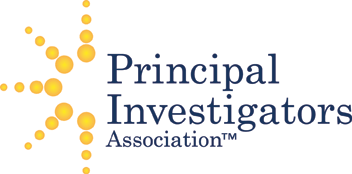|
One of the most challenging questions posed by the NIH short form is, “How much money do you think you need to do the proposed work?” This open-ended inquiry can be a minefield for PIs who’ve struggled with the budget section before. If you indicate a number on the lower end, the reviewers may think you can’t plan adequately or accommodate unforeseen setbacks. If you’re number seems too high, the panel may think you’re trying to “game the system.” So exactly, how do you determine your budget, and what do you say about it? Breeze through the budget sections of your NIH and/or NSF applications by implementing the how-to tactics found inside these educational packs! |
|
NIH R01 Budget Pack NIH R01 Grant Special Report: When applying for a National Institutes of Health (NIH) grant, in addition to your proposal’s science, you also have to forecast how much money you will need to complete your research. Therefore, you should use the budget and associated justifications to present and support all the expenses required to achieve your proposal’s objectives. In fact, your budget’s numbers are almost as important as — if not more so — the words you use to tell your research’s story. This part of your application communicates to reviewers what you plan to do with the money you are asking them to invest in your project. Some reviewers even flip to the budget first to get a snapshot of the proposal and help them understand it. Although they should not take your budget into consideration as part of the assessment process, the information is available to them. And reviewers are told to evaluate the application and assign a priority score based upon the science and feasibility, and some believe the budget an indicator of feasibility. Must-have, step-by-step expert guidance inside this 31-pg special report includes:
Available format: Digital (PDF). 60-Minute On-Demand Webinar: This number-crunching Webinar will highlight the differences between modular and detailed budgets and reveal how to balance NIH wants and needs with your institution’s requirements. You’ll learn how to write budget justifications and estimate expenses. And find out the NIH rules on allowed amounts. 5 Key Take-Aways:
Choose your preferred format: CD, MP4 or PDF Transcript. |
NSF Budget Pack NSF Grant Special Report: Designing the budget for your NSF proposal need not be an overly daunting or stress-inducing task. Many aspects of the budget will emerge somewhat automatically from the outlining and planning of your activities. This means that the preparation of the budget is best accomplished in parallel with the development of the proposal and the planning of its goals and activities. If you know early on that you intend to hire a postdoctoral fellow to perform some of the research, or that you will need to acquire a specific instrument to accomplish a critical objective, then it is wise to begin gathering necessary information (price quotes, for example) early in the grantwriting process. Must-have, step-by-step expert guidance inside this 30-pg special report includes:
Available format: Digital (PDF). 30-Minute On-Demand Webinar: If the Project Description is the “main event,” then the budget and the preparation of supplementary materials must seem like sideshows or petty annoyances. But in fact, these elements are fundamental components of your application. Putting together a clear and well-justified budget requires careful thought — the same kind that is necessary to generate a strong and compelling research proposal. Inside this 30-minute Webcast, you will find expert guidance for:
Choose your preferred format: CD, MP4 or PDF Transcript. |
|
|
|
|
|
Valid on NEW orders only. These educational products are brought to you as a training tool by the Principal Investigators Association, which is an independent organization. The information presented and its contents are not connected with the National Institutes of Health (NIH) or the National Science Foundation (NSF), nor are they endorsed by these agencies. All views expressed are those personally held by the author and are not official government policies or opinions. |






